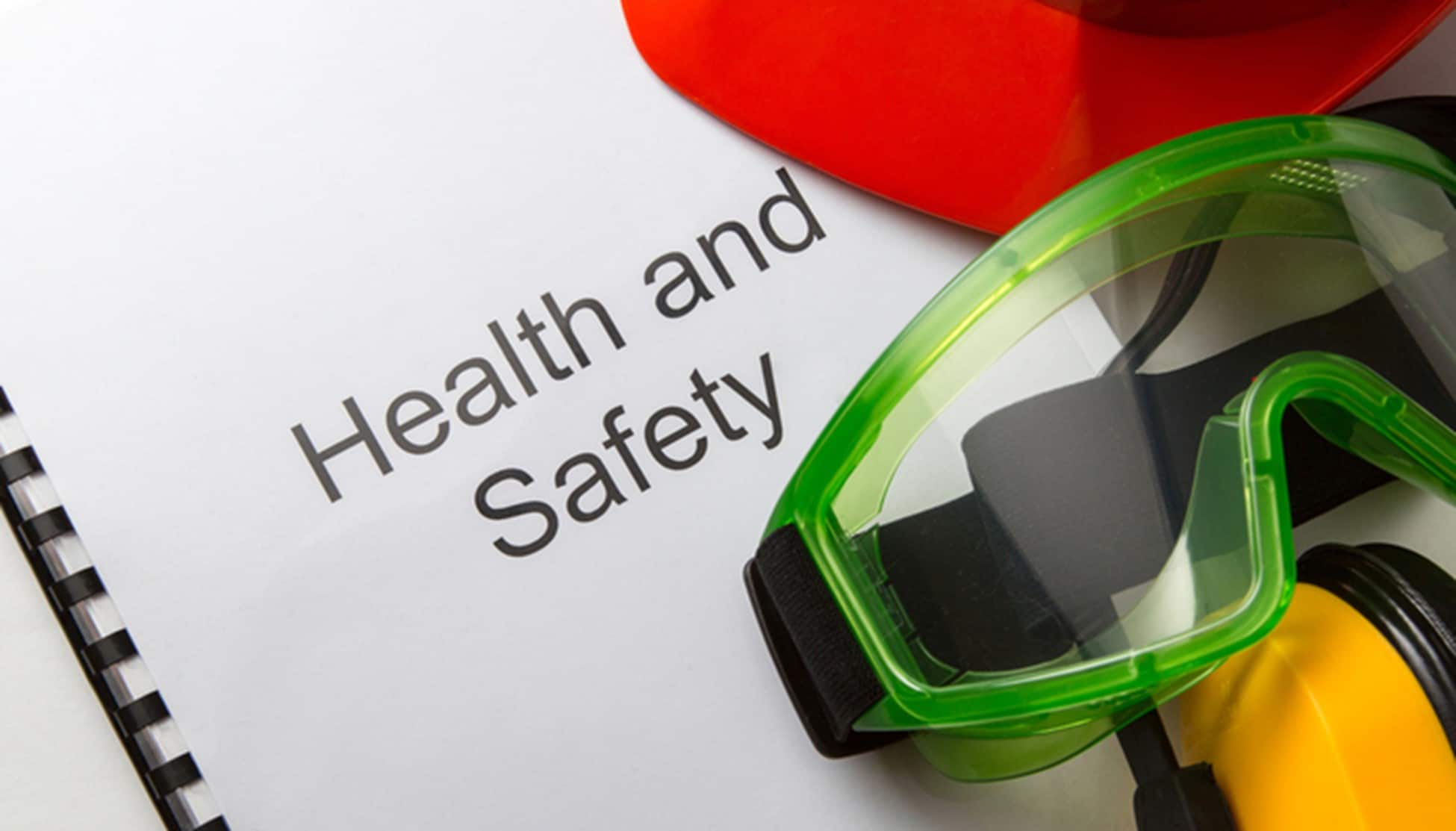
Every supervisor and employee carrying safety and health responsibilities will benefit from a comprehensive guide on how to get OSHA 30 certification. OSHA 10 and 30 courses are part of the Outreach Training Program set up by the Occupational Safety and Health Administration (OSHA).
This program’s primary purpose is to reduce the number of workplace incidents, injuries, and fatalities that occur every day across the United States. Just in 2019, a total of 2.8 million nonfatal workplace injuries occurred in the private sector. Over 888 thousand injuries led to workers missing at least one day of work.
OSHA 10 and 30 are required by some states like Nevada for construction, but are voluntary in most states. Completing them may open some doors of opportunity further along in your career.
Let’s take a look at what OSHA 30 is, how it is different from OSHA 10, and how you can get certified in the easiest way possible.
What is OSHA 30?
The OSHA Outreach Training Program was founded in 1971 and went through countless iterations before becoming what it is today. The program’s primary goal is to teach workers how to recognize occupational safety risks, mitigate and control them, and keep themselves and their coworkers safe.
The two main branches of the Training Program are OSHA 10 and OSHA 30.
OSHA 10 is a 10-hour course meant for entry-level workers. OSHA 30, in contrast, lasts 30 hours and is intended for workers who carry some health and safety responsibility, such as field supervisors, site safety coordinators, and safety directors and managers.
Both courses cover the same topics; only the OSHA 30 goes more in-depth. The core of these training programs isn’t OSHA regulations but occupational safety and health risks.
OSHA 30 Benefits
OSHA 10 and 30 are not an OSHA requirement. However, some states (such as New York, Nevada, Missouri, and Connecticut), municipalities, and employers might require you to have an OSHA completion certificate to work certain job positions.
That being said, there are significant benefits to taking an OSHA course, even if it isn’t mandatory where you live:
- Learning about workplace safety and health of all types of workers
- Promoting a safety culture at work
- Training based on participation and hands-on experience
- Training specifically tailored to the industry you’re working in
- Native language training (English, Spanish, Polish, etc.)
The construction industry, in particular, likes to see OSHA 10 and 30 certification in potential hires.
OSHA 30 Programs
The OSHA 10 and 30 courses are designed for three different industries: construction, general, and maritime. Disaster site workers – those who work on clean-up and debris removal after natural and human-made disasters – can also choose between 7.5-hour and 15-hour courses.
Here is a breakdown of what topics you can expect in the OSHA 30 Outreach courses for each industry type.
General Industry
General industry is any industry that is not the maritime, construction, or agricultural industry.
This 30-hour training, like all the others, consists of mandatory, elective, and optional topics that need to be covered.
Mandatory Topics
This part of the 30-hour course lasts 12 hours and includes the following:
-
- Introduction to OSHA – employer responsibilities, worker rights, how to file a complaint, etc.
- Hazard Communication
- Personal Protective Equipment (PPE)
- Managing Safety and Health
- Materials Handling
- Walking and Working Surfaces (with Fall Protection)
- Electrical Safety
- Fire Protection, Emergency Action Plans, Exit Routes, Fire Prevention Plans
Elective Topics
The second part lasts 10 hours, during which the trainer has to explain at least five topics listed below. One topic should be covered for at least 30 minutes.
- Fall Protection
- Machine Guarding
- Bloodborne Pathogens
- Welding, Cutting, and Brazing
- Ergonomics
- Powered Industrial Vehicles
- Safety and Health Programs
- Lockout/Tagout
- Hazardous Materials (Spray Finishing, Dipping and Coating Operations, Flammable and Combustible Liquids, and Compressed Gases)
- Permit-Required Confined Spaces
- Introduction to Industrial Hygiene
Optional Topics
The last part of the course is meant to be completed in 8 hours. The Outreach trainer can take this time to discuss any policies or new hazards related to the general industry. Alternatively, they can expand on any of the topics previously mentioned in the course. Again, the minimum amount of time they can spend on one topic is 30 minutes.
Construction Industry
The construction industry handles building development, repairs and alterations, and similar construction tasks. The 30-hour construction course includes the same topics as the general industry course: mandatory, elective, and optional topics.
Mandatory Topics
The first segment of construction safety training lasts 14 hours.
- Introduction to OSHA
- Managing Safety and Health
-
- OSHA Focus Four Hazards (falls, struck-by, caught-in or between, electrocution)
- Stairways and Ladders
- Health Hazards in Construction
- Personal Protective and Lifesaving Equipment
Elective Topics
The elective topic part lasts 12 hours, during which at least six topics have to be covered. At least 30 minutes needs to be dedicated to any topic from the following:
- Excavations
- Confined Space Entry
- Scaffolds
- Steel Erection
-
- Foundations for Safety Leadership
- Powered Industrial Vehicles
- Welding and Cutting
- Safety and Health Programs
- Ergonomics
- Concrete and Masonry Construction
- Motor Vehicles, Marine Operations and Mechanized Equipment; Signals, Signs, and Barricades; Overhead Protection and Rollover Protective Structures
- Fire Prevention and Protection
- Elevators, Derricks, Hoists, Cranes, and Conveyors
- Power and Hand Tools
- Materials Handling, Use, Storage, and Disposal
Optional Topics
The optional topics part of the course should be covered in 4 hours. As for general industry, the trainers here can choose to talk about new OSHA construction standards or hazards related to the construction industry; or elaborate more on any of the topics already covered. One topic has to be explored for at least 30 minutes.
Maritime Industry
Workers in the maritime industry deal with vessel construction, repair, and scrapping, and moving cargo and materials by ships. Unlike the previous courses, this Outreach training is divided into three parts, based on three different segments of the maritime industry: Longshoring, Shipyard Employment, and Marine Terminals.
The training program is different depending on which course you take.
Mandatory Topics
All three maritime courses have to cover these mandatory topics for 7 hours:
- Introduction to OSHA
- Personal Protective Equipment
- Walking and Working Surfaces (with Fall Protection)
- Managing Safety and Health
The Shipyard Employment course has additional training in this part that lasts 8 hours:
- Electrical
- Fire Protection
- Confined and Enclosed Spaces
- Scaffolding and Fall Protection
Elective Topics
Because Shipyard Employment has a long mandatory section, their elective topics last only 2 hours. Marine Terminals and Longshoring, elective topics last 8 hours.
The elective topics for all three courses include:
- Hazard Communications and Hazardous Materials
- Lockout/Tagout
- Respiratory Protection
Longshore and Marine’s Terminals have additional topics:
- Confined and Enclosed Spaces
- Electrical
- Fall Protection and Scaffolding
- Fire Protection
Optional Topics
The last batch of topics lasts 13 hours for Shipyard Employment and 15 hours for Maritime Terminals and Longshoring. As in the previous courses, at least 30 minutes have to be set aside for each topic. It can be any of the following:
- Material Handling
- Welding, Burning, and Cutting (Hot Work)
- Machine Guarding
- Ergonomics and Proper Lifting Techniques
- Additional Coverage (any topic that has been previously covered or other policies or risks)
Difference between OSHA 10 and 30
The first and most apparent difference between OSHA 10 and 30 training is that the former takes a minimum of 10 hours and the latter a minimum of 30 hours.
Both types of training have special categories for the construction, general, and maritime industries. They also both have mandatory, elective, and optional topic sections.
The types of topics covered in each course don’t vary at all. The difference lies in how deep the OSHA Outreach trainer goes in explaining each subject.
OSHA 10 is designed for entry-level workers who have no safety responsibility in the workplace. They are only in charge of their safety, and thus they only need a basic understanding of the most common workplace hazards.
In contrast, OSHA 30 is meant for those responsible for their safety, and for managing safety protocols. Each topic is covered more in-depth and offers insight into how best to increase the safety and health in a work environment.
In both courses, OSHA standard explanations take a backseat, while hazard identification, control, and prevention are the focus of the training.
How to Get OSHA 30 Certification
Obtaining your OSHA 30 certification is not too difficult. There are a few simple steps you need to take to get your OSHA completion card (also known as the Department of Labor, DOL card).
- Choose Your Industry
If you work in the construction or maritime industries, go for the OSHA Outreach training suited for them. If you belong to neither, general industry training is perfect for you. If you happen to be a disaster site worker, then the 7.5- or the 15-hour course will be more suitable.
As you have gleaned from the course outlines, each program is tailored to fit a specific audience. You won’t make a big mistake if you belong to the general industry and choose an OSHA 30 construction course, but it may not cover all the common safety and health hazards related to your line of work.
- Find an Authorized Trainer
One of the essential aspects of OSHA training is that only OSHA-authorized trainers can provide it. These trainers aren’t certified, but OSHA approves them to organize specific courses. They are the only ones who can issue OSHA cards after successful completion.
In recent years, fraudulent programs have become frequent. These trainers and courses claim to offer all the relevant knowledge, but in the end, they don’t have the authority to issue cards or certificates. They scam workers like yourself out of money with various promises and guarantees.
Before you sign up for training, make sure that the trainer you’re looking at is OSHA-approved. OSHA’s official website contains a list of all authorized trainers in the United States. There, you will find the trainer’s names and contact information, as well as what courses they’re allowed to teach. If your potential trainer isn’t on that list, do not sign up for their course.
Also, avoid trainers that claim employment is guaranteed after you get OSHA certified. While it will be a useful addition to your resume, it doesn’t mean you will 100% get a job when you finish the course.
- Take the Course
To apply to your desired program, you don’t have to pass any exams or meet any training requirement. Workers of any age can get OSHA certified as there is no minimum age requirement. You only need to decide whether you want in-person or online OSHA training. While you can take the online training course from pretty much anywhere as long as you have a working internet connection, look for local trainers for an in-person course. That way, you won’t have to travel far.
Each training day lasts up to 8 hours (a full-time workday). To get through OSHA 30, your trainer will require you to sit through at least four days’ worth of lessons. Once you start your OSHA 30, you don’t have to finish it all in one go. However, you must complete the course in the next six months; otherwise you must start over again.
OSHA, as an institution, doesn’t require workers to take any final exams or tests at the end. That being said, your trainer may introduce some knowledge evaluation at the end of the course. They need to inform you in advance that the testing will take place and what they’re looking for.
Upon completion, you will be issued official OSHA 30 documents.
OSHA 30 Documents
Certification cards are issued to those who complete the OSHA 10 and 30 courses:
- OSHA Certification Card: The OSHA or DOL card is a wallet card that workers can carry with them everywhere they go. Once you complete your course, your card will be mailed to you in a short amount of time. There are different versions of the card for OSHA 10 and 30, and they have no expiration date. You don’t have to renew them at any point in the future, but best management practice is a refresher every 3-5 years.
These cards are made from durable plastic, meaning they’re tough to tear. If you happen to lose your card, you will have to contact your trainer for a replacement. However, you can obtain a replacement only if it has been less than five years since you took the course. The replacement will cost around $30.
Is OSHA 30 enough?
When you complete your OSHA 30 course, is that enough health and safety training? Are you set when it comes to workplace hazards?
Unfortunately, no. OSHA 30 covers a lot and is incredibly beneficial in one’s career. However, your organization may require you to undergo additional training covering hazards that are not part of the OSHA 10 or 30 courses. This can be training about operating machinery, common chemical hazards in the workplace, or anything else specific to your job position, organization, or type of work.
Your employer is not only supposed to inform you of all the workplace safety training you need to complete, but they are also obligated to organize and finance it. You may opt to take OSHA 10 and 30 in your free time, but your employer should provide any mandatory training.
Conclusion
The OSHA Outreach Training Program is a fantastic initiative to reduce the number of workplace incidents and injuries. Its two main courses, OSHA 10 and 30, are conceived to provide workers on every level with relevant knowledge about recognizing workplace hazards and mitigating them. OSHA goes out of its way to ensure the training is easily accessible to everyone, regardless of their native language, type of industry they work in, or whether or not they can attend the courses in person.
OSHA 30 is meant for supervisors and those with safety responsibility. There are three different OSHA 30 courses for three different industries: construction, general, and maritime. Your first step would be to decide which industry you want to train for.
It is of vital importance that you find an OSHA-authorized trainer. You do not want to pay for a course that won’t provide you with an OSHA card at the end. Before you decide on a program, visit the OSHA’s official website and check their list of authorized trainers. If your trainer is on there, you are making the right choice.
Upon completing the course, you will receive an OSHA card and certification. This will greatly help you in your career. Even though your employer might require you to undergo further training, your OSHA certification is a big step forward no matter what type of job you’re working in.
If you have some questions or need more information about the OSHA 30 certification, please email SAFE at Larry@safety4employers.com or give us a call at 775-843-8318. It would be our pleasure to help you choose the right OSHA training for you.








